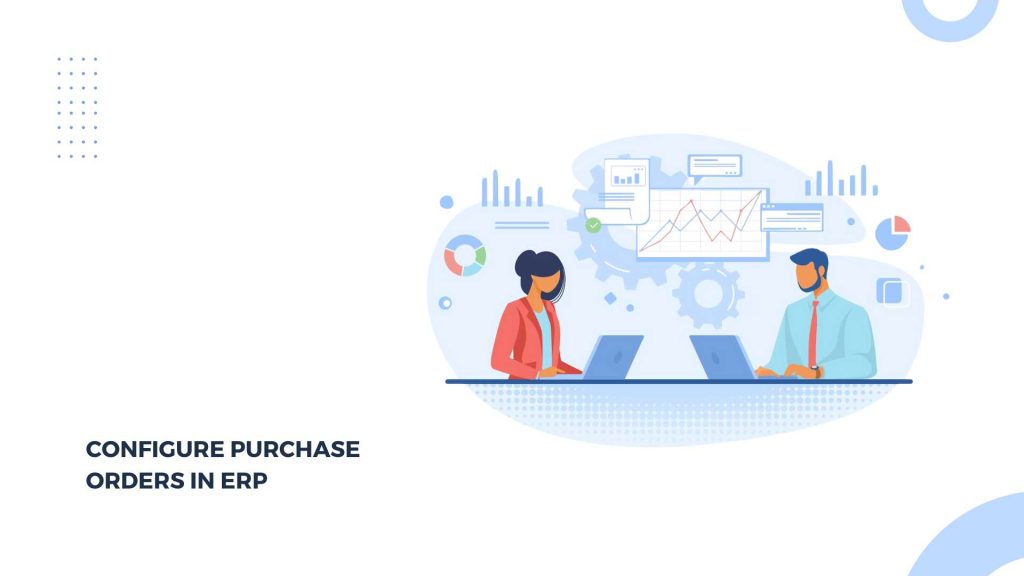A Purchase Order (PO) is a foundational document in business transactions, providing a structured and formalized process for acquiring goods or services between buyers and sellers on specific terms and conditions of purchase. This document includes item descriptions, quantities, agreed-upon prices, delivery dates, and applicable payment terms.
The primary purpose of a PO is to establish clear communication and understanding between the parties involved, mitigating potential misunderstandings and disputes. By delineating the expectations and obligations of both buyer and seller, a well-crafted PO streamlines the procurement process, enhances transparency, and facilitates a smoother workflow. As an integral part of procurement management, a Purchase Order ensures efficiency, accountability, and compliance with established business protocols.
How Does a Purchase Order Work?
Initiation: The purchase order process starts when a customer identifies a need for goods or services and formally creates a purchase request.
Creation: Once the need is identified, a purchase order is generated, providing a detailed breakdown of the items or services required, quantities, agreed-upon prices, delivery timelines, and any clear terms and conditions.
Approval: The created purchase order typically undergoes an organizational approval process involving relevant stakeholders such as department heads and finance teams. It ensures that the purchase aligns with budgetary constraints and organizational priorities.
Transmission: The purchase order is sent to the selected supplier or vendor after approval. This step formalizes the commitment and establishes a legal agreement between the buyers and the sellers.
Acknowledgment: Upon receiving the purchase order, the supplier acknowledges it and confirms their ability to fulfill the specified requirements within the agreed-upon terms. This step is crucial for avoiding any misunderstandings regarding the order details.
Fulfillment: The supplier fulfills the order by delivering the specified goods or services within the agreed-upon timeframe. Compliance with the terms summarized in the purchase order is essential for a successful transaction.
Receiving and Inspection: The buyers receive the goods or services and perform a complete inspection to ensure they fulfill the specified quality standards and quantity outlined in the purchase order.
Invoicing: Following successful delivery and inspection, the supplier issues an invoice to the buyer, referencing the corresponding purchase order number. This document outlines the total cost, applicable taxes, and payment terms.
Payment: The buyer processes the price based on the terms agreed upon in the purchase order and the supplier’s invoice, completing the purchase order cycle.
Differences between purchase orders and invoices:
Invoice
- Created by the seller
- Created after purchase
- Confirms goods delivered
- Requires payment on a specific date
Purchase Order
- Created by the buyer
- Created before purchase
- Lays out goods needed
- Includes proposed payment details
How ERP can configure Purchase Orders
ERP Solutions are pivotal in configuring Purchase Orders (POs). Here’s how ERP systems can configure Purchase Orders:
Centralized Data Management:
ERP systems consolidate data from various departments, ensuring a centralized and accurate repository for information related to suppliers, inventory levels, and budgetary constraints.
Automated PO Generation:
ERP systems enable the automatic generation of Purchase Orders based on predefined rules and criteria, reducing manual effort and minimizing errors. This feature enhances efficiency in initiating procurement processes.
Integration with Modules:
ERP seamlessly integrates with other modules like inventory management, finance, and supply chain, facilitating real-time updates on stock levels, budget availability, and supplier performance, which can influence PO configuration.
Customization and Approval Workflow
ERP systems allow organizations to customize PO templates to meet specific business requirements. Additionally, they support defined approval workflows, ensuring that each PO undergoes the necessary approvals before being transmitted to suppliers.
Vendor Relationship Management
ERP systems aid in maintaining a comprehensive database of suppliers, helping organizations evaluate and select vendors based on performance metrics. This data influences the configuration of POs by considering supplier reliability and past transaction history.
Real-time Monitoring
ERP systems provide real-time monitoring of the entire procurement cycle. It includes tracking the status of POs, delivery schedules, and invoice processing, allowing organizations to respond promptly to any delays.
Conclusion
Acumatica ERP enhances Purchase Order Management by offering a platform that integrates effortlessly with different business modules, providing real-time visibility into inventory, supplier relationships, and budgetary constraints. Its user-friendly interface and customizable workflows streamline the procurement process, promoting efficiency, accuracy, and informed decision-making for organizations.

Vijay comes with a vast experience in ERP and enterprise solutions space with about 20 years of experience in various packaged application like Acumatica, SAP, Orion, Salesforce.com, SugarCRM and, SalesLogix.

